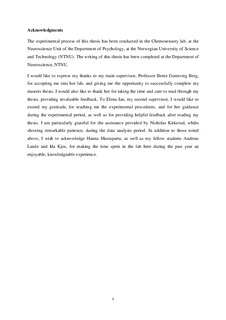| dc.description.abstract | Herbivorous insects as model organisms have been shown to be very useful in studies related to neuronal and molecular elements of the olfactory system, and for studying the mechanisms of olfactory coding. Naturally occurring stimuli are usually presented as mixtures of numerous single odours. In the study presented here, calcium imaging of odour-evoked responses in the antennal lobe (AL) of the heliothine moth was conducted during stimulation with single plant odours and ternary mixtures, composed of a binary pheromone mixture and a single plant odour. Prior to the calcium imaging measurement, projection neurons were stained, with fura-dextran, via retrograde transportation after injection into the calyces of the mushroom body. Time traces of AL glomeruli from different individuals showed that the strongest responding glomeruli were all located within close proximity to each other. An overall suppressive effect of pheromones on plant odour evoked responses in the AL was identified when using ternary stimuli, with a few cases of synergistic effects of plant odours on pheromone-evoked responses being found. In addition, it was shown that the responses in the macroglomerular complex were greater when stimulating with the pheromone mixture than with the primary pheromone component alone. | nb_NO |
